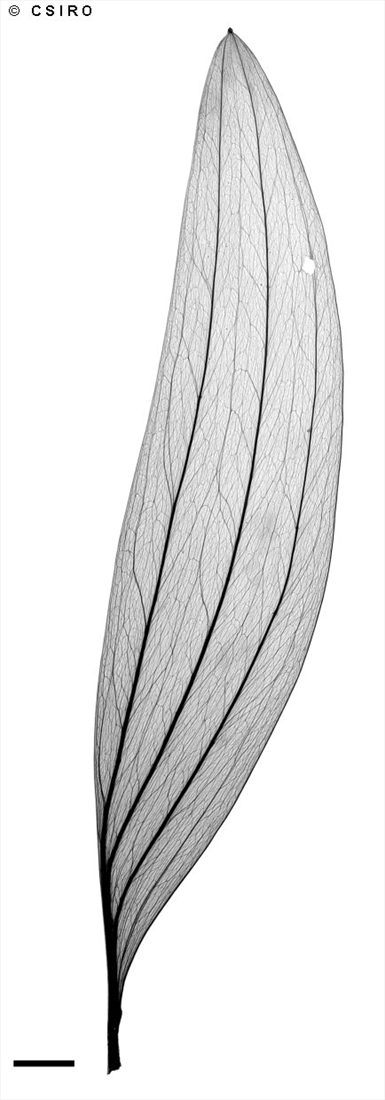Australian Tropical Rainforest Plants - Online edition
Acacia holosericea A.Cunn. ex G.Don






Don, G. (1832) General History of Dichlamydeous Plants 2 : 407. Type: Port Keats, Cambridge Gulf, Oct. 1819, Cunningham; lecto: BM, K. Fide Pedley (1978).
Silky Wattle; Silver-leaved Wattle; Wattle, Silky; Wattle, Silver-leaved
Usually flowers and fruits as a shrub 1-4 m tall.
Leaves phyllodineous, usually clothed in white appressed hairs which give the leaf a velvety texture and a grey-green appearance. Leaf blades about 6.5-17 x 1.7-4.8 cm. A gland usually visible on the margin at the leaf blade-petiole junction. Veins longitudinal and parallel, about 3 or 4 veins more prominent than the rest. Petiole somewhat swollen and transversely wrinkled but wrinkling often difficult to see because of the covering of pale hairs.
Cotyledons oblong, about 4-5 x 2-3 mm, apex obtuse, base sagittate or auriculate. First leaf pinnate, second leaf bipinnate. By the sixth or seventh leaf stage: leaves bipinnate, petiole broadly flattened. At the tenth leaf stage: leaves phyllodineous, narrowly elliptic, usually with two main veins running from the base to the apex or bipinnate with flattened petioles. Stipules triangular, about 1.5-2 mm long. All parts of the seedling usually clothed in fine white hairs. Seed germination time 9 to 14 days.
Endemic to Australia, occurs in WA, NT, CYP, NEQ, CEQ and southwards as far as coastal central Queensland and southern inland Queensland. Altitudinal range from near sea level to 900 m. Usually grows in open forest but sometimes found in monsoon forest and vine thickets.
This species has been used as a fish poison.





